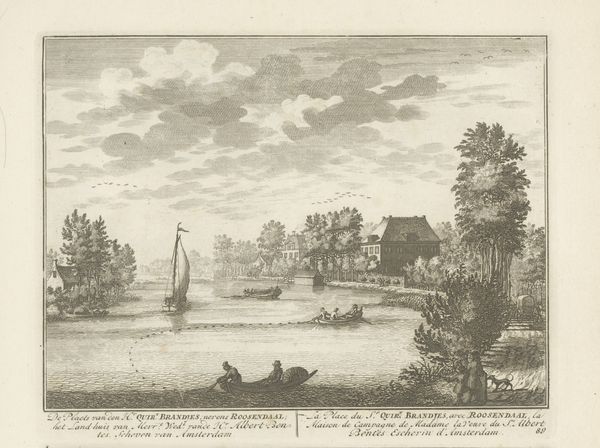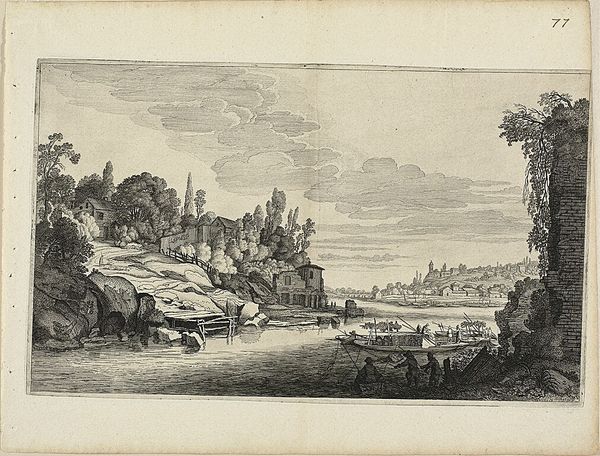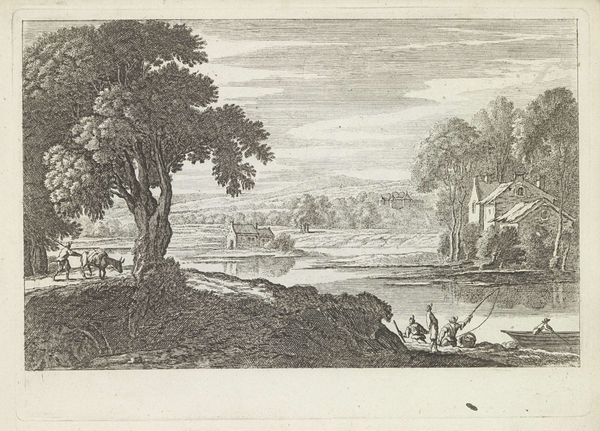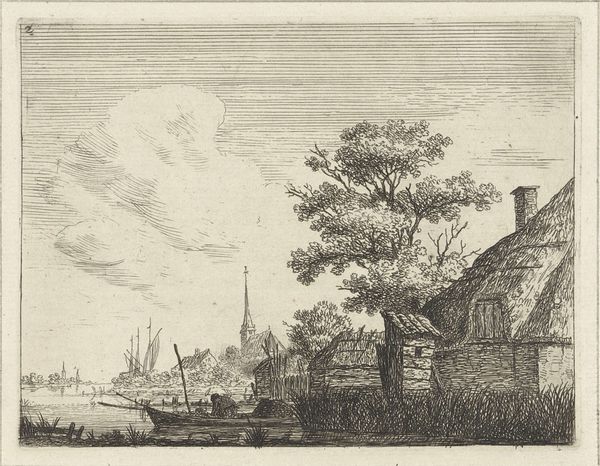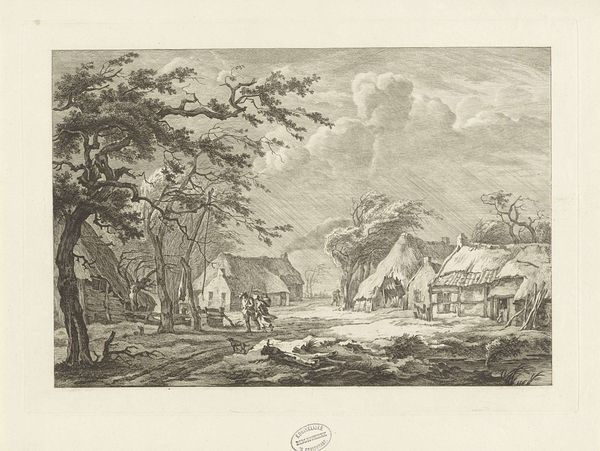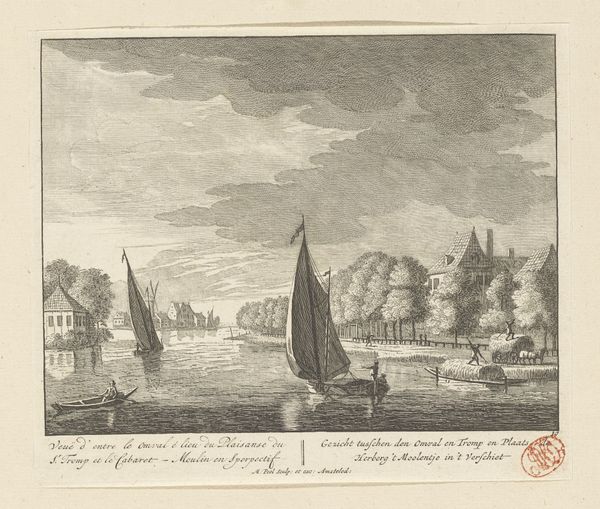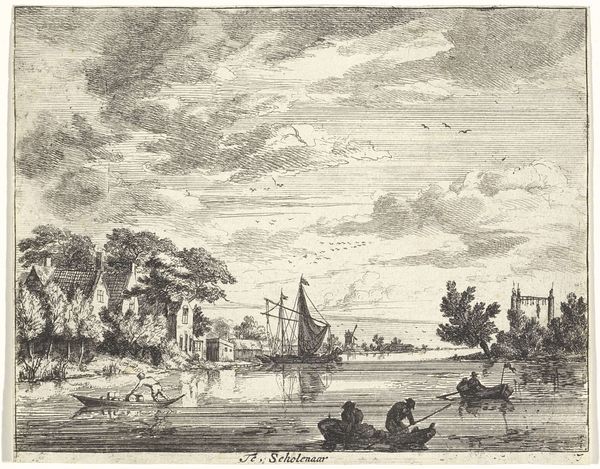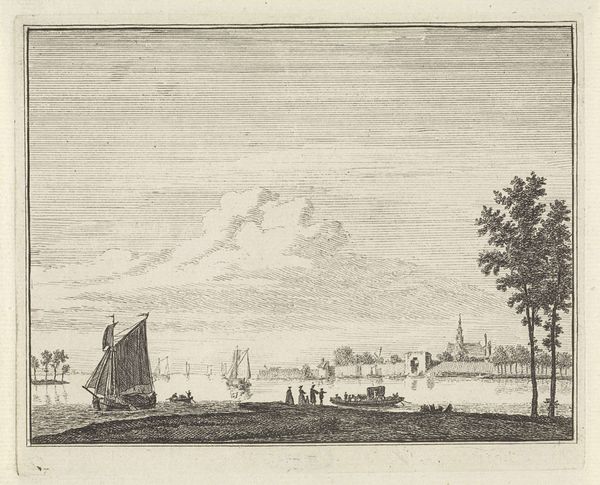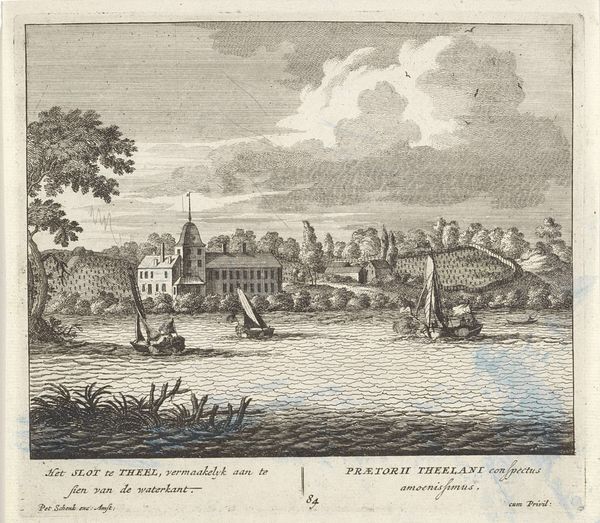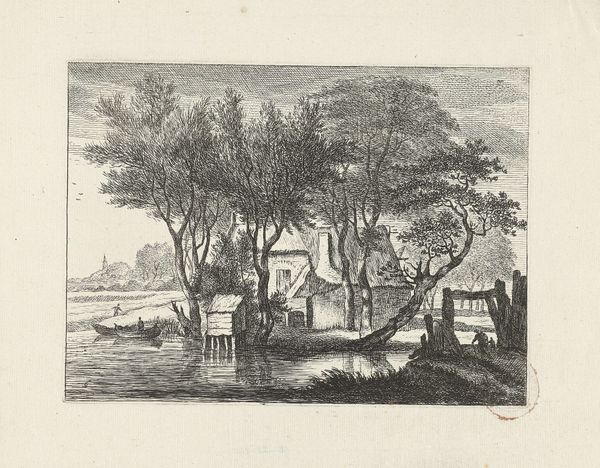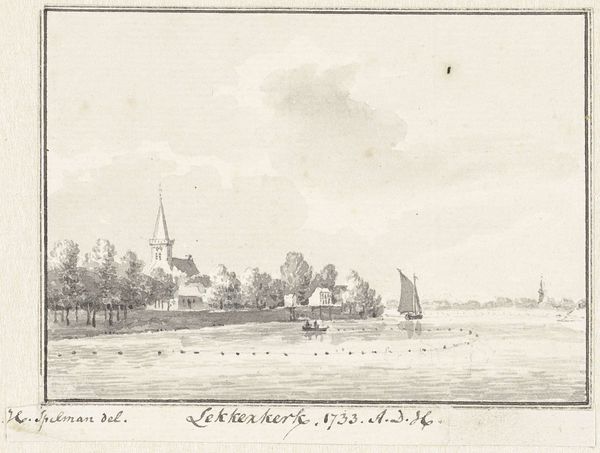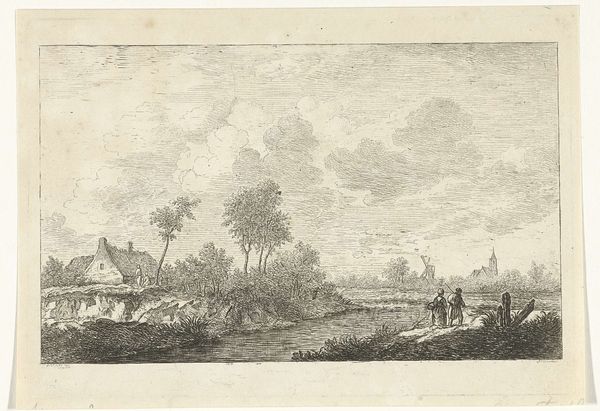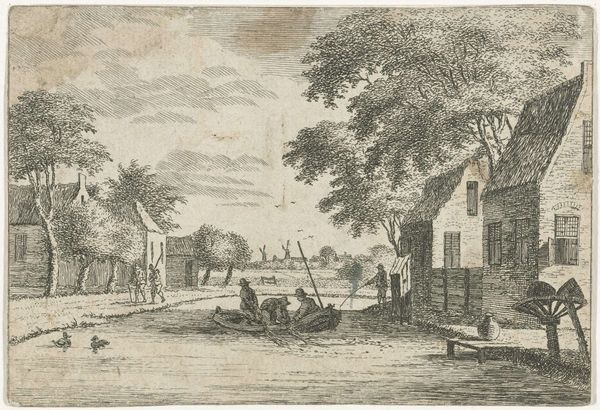
Riviergezicht op de IJssel met molen en boerderij op oever 1746 - 1814
0:00
0:00
print, etching
#
dutch-golden-age
# print
#
etching
#
landscape
#
etching
#
cityscape
#
genre-painting
Dimensions: height 83 mm, width 120 mm
Copyright: Rijks Museum: Open Domain
Curator: This etching, housed here at the Rijksmuseum, is entitled "Riviergezicht op de IJssel met molen en boerderij op oever," which translates to "River View of the IJssel with a Mill and Farm on the Bank." It's attributed to Carel Frederik (I) Bendorp, and dates sometime between 1746 and 1814. Editor: It's… surprisingly still. Even though it depicts people, a river, windmills – all dynamic elements – there's a certain stillness to it. Is it the medium, the etching style? It almost feels like a memory being recalled. Curator: It’s fascinating to consider the context. During that period, the Dutch Republic experienced considerable socio-political change. Visual representations of the landscape, such as this, weren’t merely picturesque; they played a part in shaping a sense of national identity, particularly among the elite. Editor: Absolutely. And how the depiction of labor within the landscape served ideological purposes. Who are these figures in the boat? What does their work, their proximity to both nature and the symbols of Dutch progress - like the mill - tell us about the prevailing social narratives? Curator: We know from period documents that landscapes were often used to assert ownership, to claim not just physical space, but also its productive capabilities. Bendorp’s print isn't simply a beautiful view; it's a statement about the relationship between people, land, and power. It reinforces that traditional association with hard labour done in open water which still endures as part of local Dutch consciousness. Editor: This tension is even visualized. Notice the sharp contrast in textures— the precise lines delineating the buildings versus the looser, sketchier renderings of the foliage, like the wispy tree on the left. Is that visual contrast reflective of the shift between industrialism and agriculture? Curator: It very well could be. By utilizing these specific aesthetic techniques, the artist is directly participating in the cultural dialogues regarding the evolving Dutch environment and its relation to shifting forms of work and power during that period. Editor: Looking at it now, the "stillness" I mentioned feels more like a loaded quiet. There's so much happening beneath the surface, economically and culturally, it has completely altered my initial view. Curator: Precisely, a reminder that art often reflects and shapes the very society in which it is created. Hopefully visitors have similar new awareness now, too.
Comments
No comments
Be the first to comment and join the conversation on the ultimate creative platform.
